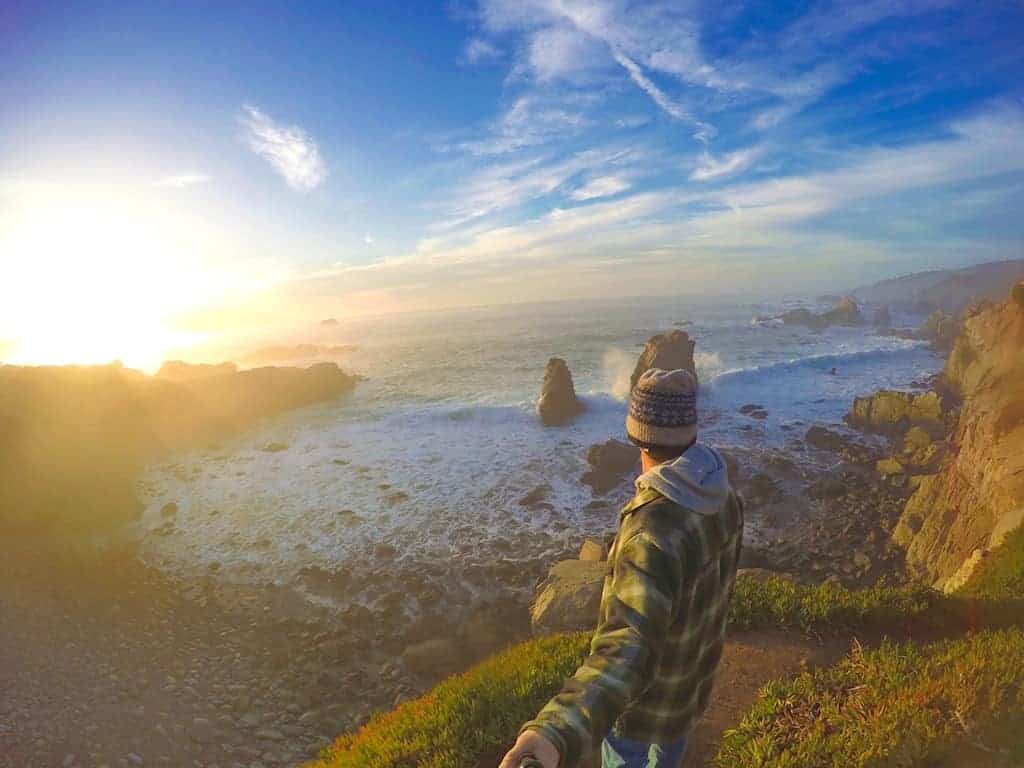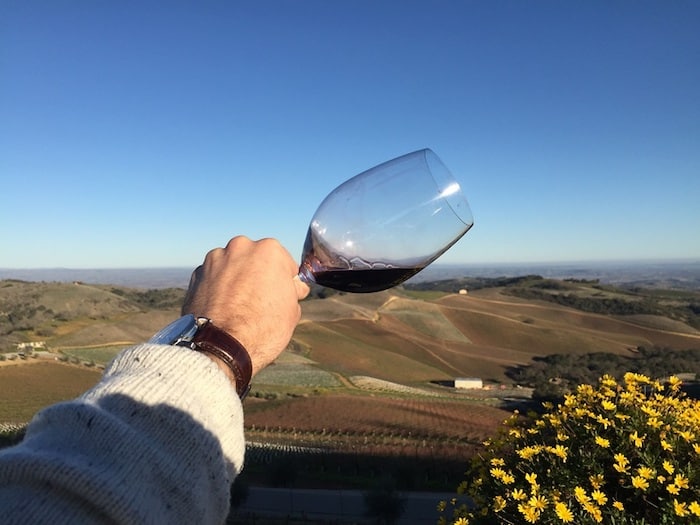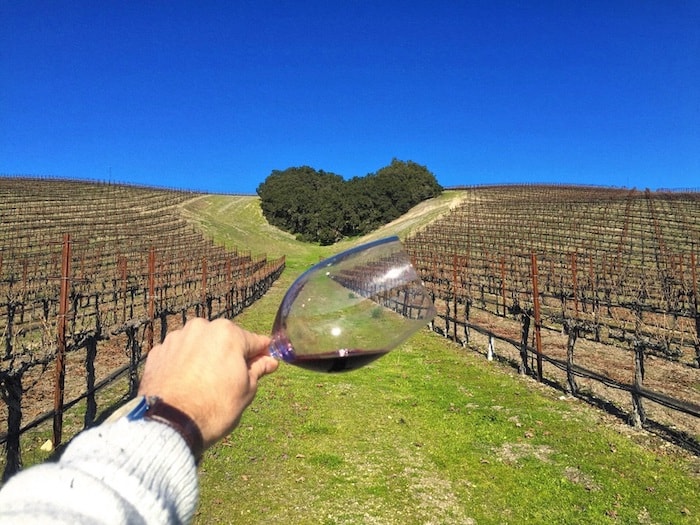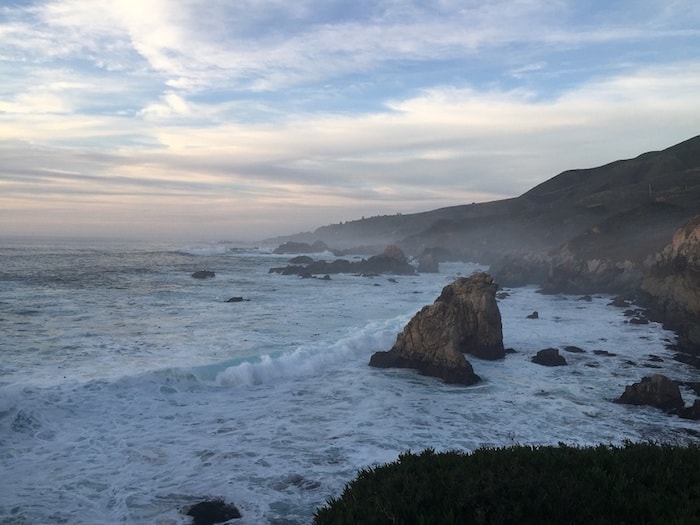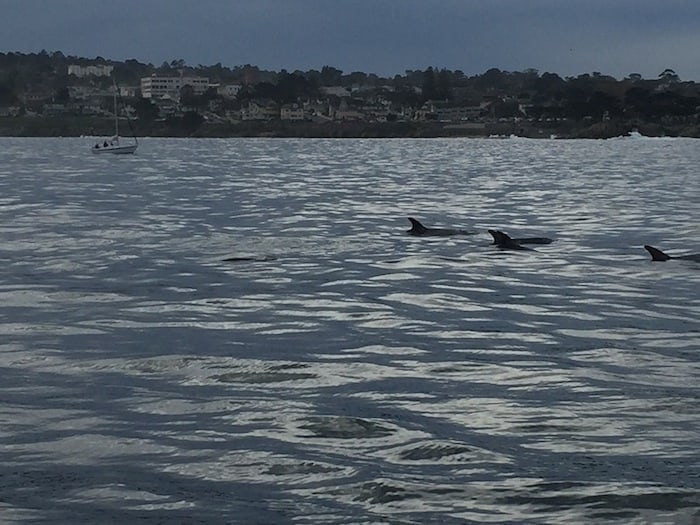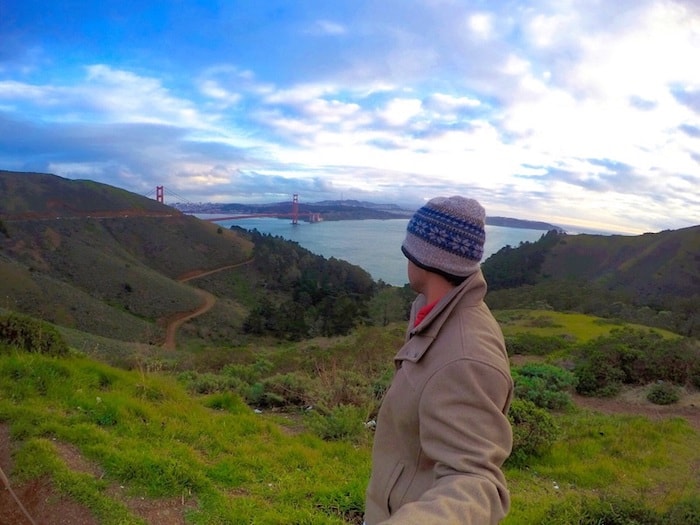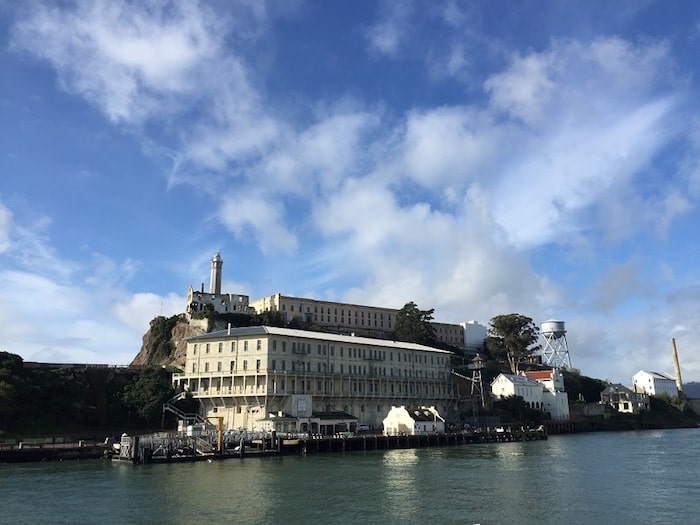After recently embarking on a 12-day journey up California’s coastline, our Pacific Coast Highway road trip itinerary narrows down some of the best routes and cities to stop in. Regardless of what kind of traveler you are, California has something for everyone.
Thousands of travelers both foreign and domestic come to California each year in an effort to experience one of the world’s most epic road trips: California’s Pacific Coast Highway. Arguably one of the most beautiful coastlines in the world, this breathtaking highway offers road trippers expansive landscapes and vistas, delicious food, complex and refined fine wine, endless coastal activities, and a relaxed Californian vibe.
But where to start? We’ve done our best to detail the most affordable and worthwhile methods for navigating the Pacific Coast Highway, in addition to including a wide variety of activities and travel strategies that afford flexibility to you and or your family.
Feel free to substitute activities and timelines to suit your own personal situation. We opted for roughly 2 nights in each city, but the length of time at each stop is entirely up to you.
Getting to California’s Pacific Coast Highway
Also known as Highway 1, California State Route 1 and the “PCH”, the Pacific Coast Highway runs for more than 650 miles up most of California’s coastline. Travelers can opt to go South to North or North to South. This itinerary will cover a South to North route, beginning in San Diego and ending in San Francisco / Napa Valley, but if you’d rather do it in the reverse we’ll mention the two airports we recommend flying into below.
- For North-bound travelers, you’ll want to fly into San Diego International Airport (SAN).
- For South-bound travelers, we recommend flying into San Francisco International Aiport (SFO).
Once you’ve arrived, you’ll want to rent a car. Consider signing up for the right car rental loyalty programs in order to save both money and time, in addition to acquiring upgrades on arrival.
Note that the Pacific Coast Highway is well paved for the majority of the stretch, so there’s really no need to rent a gas-guzzling vehicle. The only exception to this is if you’re planning on heading more inland and exploring some of the national parks and/or remote winery roads.
See highlights from this Pacific Coast Highway trip in the above video!
First Stop: San Diego
San Diego is a special place. From local craft beer abound to beautiful beaches, neighborhoods and hikes, San Diego makes for an ideal, relatively warmer climate first stop to get you excited for the rest of your California road trip.
Where to Stay in San Diego
In this relatively large city, accommodation ranges from quality Bed and Breakfasts to Luxury Hotels. Regardless of your budget, finding the ideal hotel or Airbnb isn’t very difficult. It really just comes down to budget, location and the kind of experience you’re looking to get out of San Diego. Plus, since this is a road trip, you’ll have a car, so navigating the city regardless of location will be relatively simple.
For an old-school hotel experience, try the La Valencia Hotel in La Jolla, which is a classic spot near the beach. The Hard Rock Hotel near downtown San Diego, is swanky, modern and surprisingly affordable guaranteed to enhance your experience in San Diego. Each floor has aesthetics tailored to musical eras and themes. You’ll find original Jimmy Hendrix guitars and dresses worn by singers including Madonna and Shakira adorn the walls.
What I liked best about the Hard Rock San Diego was that it didn’t feel cluttered or overcrowded. In addition, there are a couple of great restaurants located within the hotel itself, including the famed sushi chain NOBU and also Maryjane’s. Both offer a wide assortment of cuisine options. We recommend NOBU for Lunch and or Dinner. Maryjane’s is perfect for Breakfast.
What to Do in San Diego
San Diego boasts an eclectic cultural scene, with neighborhoods, bars and restaurants ranging from the exclusive to hole-in-the-wall culinary gems.
Hike San Diego
For me personally, it’s the outdoors scene that captivates me most about San Diego. Hiking in Torrey Pines and Mission Trails Regional Park were some of my favorite highlights.
“Whether you’re planning a day hike or an overnight camping trip, Mission Trails, Torrey Pines and Santee Lakes are great places to experience the Great Outdoors in San Diego,” said Debbie Sipe, Executive Director of the California Association of RV Parks and Campgrounds, which hosts Camp-California.com, the travel planning website.”
Not far from one of our favorite areas to eat and indulge in California wine – La Jolla – is Torrey Pines. This park is around 2,000 acres in size and is perhaps most famous for harboring the rare Torrey Pine pine tree. Over 8 miles of trails traverse a unique landscape, from which you can often see rare grey whales and dolphins breaching just off the beach.
As Debbie mentioned, Mission Trails Park is also a fantastic area to explore and get some fresh air. This larger park is over 7,000 acres with even more rugged terrain. You can also partake in rock climbing or go fishing at Lake Murray. There are guided nature walks and a variety of events you can take a look at on the park’s website.
Visit La Jolla
For a bit of retail therapy and a number of unique dining experiences, it’s worth a stop in San Diego’s La Jolla neighborhood. This upscale seaside area offers great views of the Pacific while you walk the streets shopping, eating and drinking.
For great views, local seafood and other San Diegan culinary delights, it’s worth a stop at Georges by the Cove. Frequently voted San Diego’s best restaurant.
If you’re more in the mood for Italian, check out the quaint, affordable and delicious restaurant La Dolce Vita tucked away in a small courtyard in downtown La Jolla.
Go Ice Skating on the Beach (Winter Only)
If by chance you’re planning a Pacific Coast Road Trip during the holiday season, consider ice skating at Hotel del Coronado. It’s perhaps one of the most unique experiences in California at this time of year.
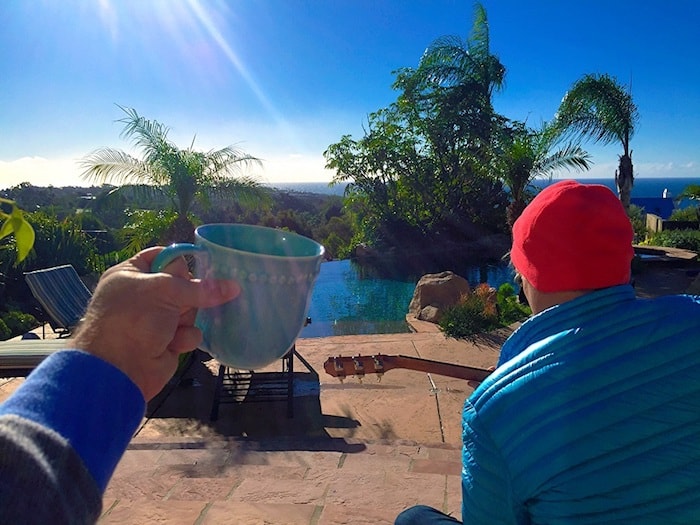
Second Stop: Malibu
Let’s get this road trip rolling! Hopefully, after enjoying a couple of relaxing days in San Diego you’re now ready to hit the Pacific Coast Highway in earnest. On to Malibu.
Little did I know that locals in Malibu apparently have a thing for abbreviating or shortening the names – just like me. Known locally simply as “The ‘Bu,” Malibu may be best known as being a Hollywood movie stars’ retreat.
Once you begin driving through this elegant yet surprisingly un-pretentious-looking coastline, you’ll see why. From beautiful stretches of beach to the rolling hills of the Santa Monica Mountain Range, it’s easy to get lost in the natural aesthetics present across the landscape. If you want to stay in the Malibu area, here are some hotel recommendations.
Things to do in Malibu
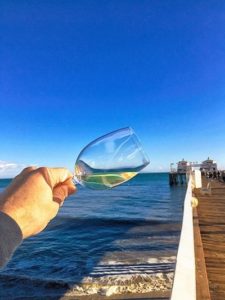 There is no shortage of outdoor activities and locations to enjoy a drink with local cuisine. If you’re here for a couple of days and travel actively, you can hit the bulk of Malibu’s “Must-do’s” with relative ease.
There is no shortage of outdoor activities and locations to enjoy a drink with local cuisine. If you’re here for a couple of days and travel actively, you can hit the bulk of Malibu’s “Must-do’s” with relative ease.
Consider renting a kayak from The Malibu Surf Shack and coasting by both Billionaire’s Beach (also known as Carbon Beach), and Surfrider Beach.
Stop by the Malibu Pier and take in the sights and sounds of the sea. More often than not, you’ll be greeted with dolphins and or whales in the distance. Grab a glass of Albarino from the Malibu Farm Café with over-the-counter service, or venture further out on the pier to enjoy the Malibu Farm Restaurant.
We spoke with Sunset.com regarding things to do in Malibu, and lunch came highly recommended at the Malibu Café. This unique ranch isn’t far from the PCH, and you can enjoy a relaxing experience on their outdoor couches while playing bocce on the lawn as chandeliers dangle from the surrounding trees.
Sunset’s tip?
“Order the heart-stopping lobster claw egg roll, a steal at $16.”
Another popular pastime for both locals, tourists and movie stars is the horseback riding scene. With so many great hiking trails and views in the area, it’s worth booking a ride through Park Place Stables.
Lastly, for fine wine, beautiful views, live music and food trucks – venture over to The Rosenthal Wine Bar & Patio, which can be found at 18741 Pacific Coast Highway. Wine tasting flights are a modest $14 and allow you to sample a variety of the local AVAs production.
If you want to escape the coastal scene, venture about 4 miles inland and see the Rosenthal Vineyard Estate for yourself. The road will take you almost 1,500 feet up into the hills, where you can enjoy an on-site wine tasting and or tour. Vines dot steep hillsides where the cool evenings and mild sunny days help to produce exceedingly complex wine. Note that tours on the property are about $60 and can last upwards of 2 ½ hours.
Travel Tip: On your way from Malibu to Santa Barbara, Traverse Ventura Highway
Third Stop: Santa Barbara
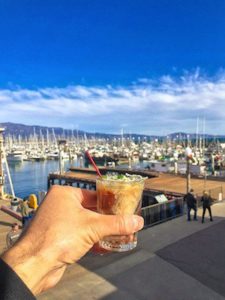 Ahhh, I’m about to get bombarded with a lot of nostalgic feelings thinking about Santa Barbara. After completing the PCH road trip, I can say without hesitation that this town was by far my favorite stop along our itinerary.
Ahhh, I’m about to get bombarded with a lot of nostalgic feelings thinking about Santa Barbara. After completing the PCH road trip, I can say without hesitation that this town was by far my favorite stop along our itinerary.
In short, Santa Barbara is a Mediterranean-inspired town with a relaxed, beachy vibe. It’s here that the mountains quite literally roll into the sea. The clam chowder, the oyster shooters, the views, the wine, the nightlife and the general vibe of this town make it one of the most unique places I have ever been.
Fun Fact: The movie “Sideways” helped to put Santa Barbara on travelers’ maps following its release in 2004
What to do in Santa Barbara
Eat at Brophy Bros.
Located dockside not too far down the beach from Stearn’s Wharf is the restaurant Brophy Bros. As local expert Geneva Ives puts it:
“If you go to only one restaurant in Santa Barbara, go to this one for a true local experience. Hope you like seafood!”
Brophy’s dishes aren’t the only thing worth highlighting. The Bloody Mary is fantastic, but the Oyster Shooter is the best one I’ve tried anywhere in the world. Eating at Brophy’s must be included on any California road trip itinerary.
In addition, the views from the upstairs portion of the restaurant give you the opportunity to see the entirety of Santa Barbara, its harbor and mountainscape backdrop.
Tip for eating at Brophy Bros? Geneva also recommends planning your visit during off-hours. The restaurant has become fairly well known, so it’s not uncommon to experience a 1 – 2 hour wait during prime lunch and dinner hours. I recommend going right when it opens, or during mid-afternoon.
Visit Stearn’s Wharf
Stearn’s Wharf greets you with a sunny daze, the smell of fresh-caught fish and a variety of eateries and shops. Just don’t get sucked into all of the gift shops! Enjoy the sights and sounds here and grab a beer.
Try the Wine – Take the Urban Wine Trail
Santa Barbara County is home to over 200 vineyards. Cleverly, a number of local wineries have opened tasting rooms (over 20 currently) in a certain area of downtown Santa Barbara dubbed “The Funk Zone.” Ummm, yes please? Restaurants and breweries are here as well and there are pre-packaged wine tasting routes that make it easy to navigate the area.
RELATED: The Essential Santa Barbara Wine Tasting Itinerary
We also spoke with Jenna Zech, a Santa Barbara local who has worked in the Santa Barbara restaurant and wine industry for the past 10 years. Here’s what she recommended to us in the way of places to eat:
“Opal Restaurant and Bar: This is a local’s favorite spot, and tourists don’t often find it because it is just above the fray of downtown. The menu is eclectic Californian that draws on flavors and ingredients from around the world (as I find most Californian cuisine does now) and anyone can find something they would like. What I think makes locals come back though is the energy of the place. The servers are always in high spirits, often greeting regulars like old friends, chatting with guests about wine parings, or simply discussing what’s happening around town. On any given night you can find Tina or Richard, the owners, on the floor chatting with guests (or helping servers if its busy!) and really enjoying themselves.
Here is what Richard, who curates the wine list, has to say about it: “Our wine list reflects the same philosophy as our Menu: an eclectic blend of influences and selections from around the world, abounding with not only well-regarded, recognizable selections, but also with high-quality, off-the beaten track selections to satisfy an ever-more adventuresome public.”
C’est Cheese: This is the spot for brunch. 3 words. Breakfast. Grilled. Cheese. And not to oversell these bad boys, but they are perfect. It doesn’t get much better than that. There are other items on the menu, if that doesn’t sound quite like what you’re looking for. They also have wonderful pastries and can make a mean cappuccino to help get your morning going.
Bonus: They have a cheese counter next door where a cheese monger can help you pick out some snacks for your afternoon wine tasting.”
Where to Stay in Santa Barbara
Brisas del Mar
On our most recent visit to Santa Barbara, we stayed at Brisas del Mar. A Mediterranean-inspired hotel with comfortable beds and good-sized rooms. The rooms were very affordable, but it’s the customer service and location that really made this place comfortable. Free breakfast, free DVD rentals, free bike usage, free wine in the early evening and incredibly friendly and welcoming staff. Plus, the beach is only a couple of blocks away. We opted to tour the town by bicycle exploring the main drag, beach, wharf and harbor.
Alternatively, you can browse a number of Santa Barbara hotel options right here.
Fourth Stop: Solvang
For all of the Winetravelers out there, we couldn’t forget to include a visit to Solvang in this Pacific Coast Highway itinerary. Located by the now-famed San Ynez Valley, Solvang is a Denmark-inspired small town. Everything from the architecture to the cuisine of the area is ‘Denmarked up’. A piece of Northern Europe that makes you feel far removed from California.
It is worth noting that Solvang is kind of a tourist trap. It is a cute and very unique town, and I do believe it’s worth stopping through for a few hours. Especially if you’re traveling as a couple and are looking to do some shopping in a romantic setting. The entire town feels like it was designed to lure tourists, but that doesn’t take away from many of the fine dining, accommodation and wine tasting establishments.
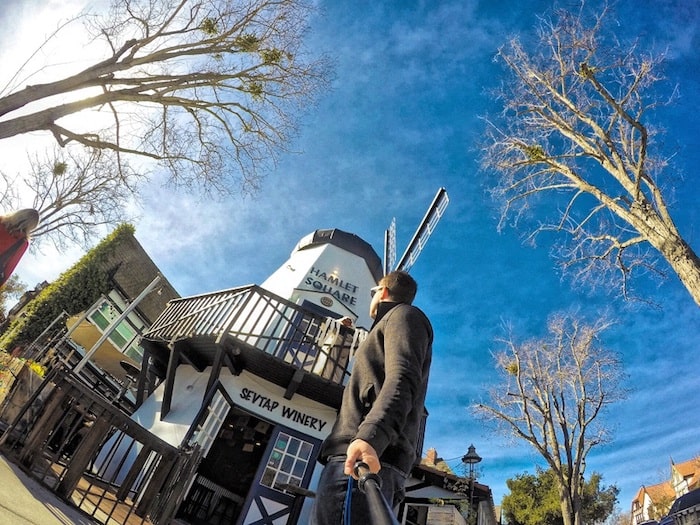
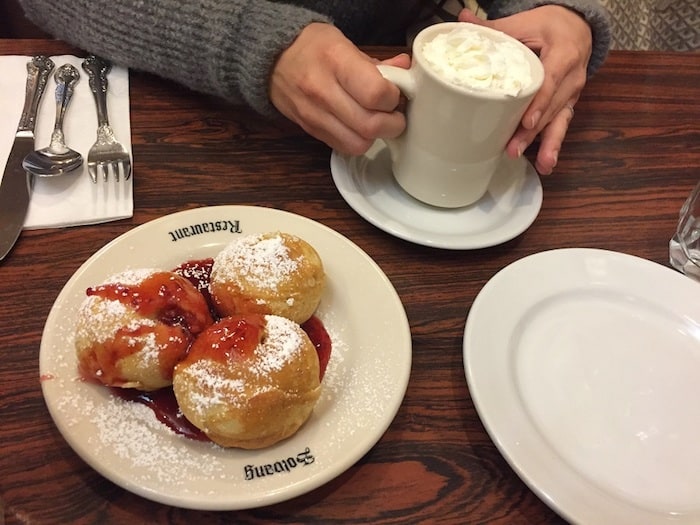
What to do in Solvang
For me personally, there are two must-do’s in Solvang.
Try the wine of The San Ynez Valley. 20 or-so tasting rooms can be found around town showcasing wines made just a few miles away. Over 100 vineyards span The San Ynez Valley, so you’ll have an opportunity to try an assortment of varietals produced from varied micro-climates in the region.
Try the Æbleskiver. A Danish-inspired treat, Solvang Restaurant in the heart of the town offers one of the best examples.
Arne Hansen, former owner of Solvang Restaurant offers some insight into what exactly Æbleskiver is. The following was published in the Santa Ynez Valley Visitors Magazine in September of 1977.
“You can find them served several different ways in Solvang, CA. The most common way is with powdered sugar sprinkled over them and then topped with raspberry jam. Sometimes people have ventured to ask me how aebleskiver were invented and here I am always at a loss, because it is a very old invention. One theory was Karl Jorgensen’s, former owner and publisher of this magazine, from many years ago. It went something like this:
Back in the good old days, when the Vikings were roaming up and down the coasts of Europe and the waters of the Atlantic, one band of these Vikings had been particularly hard hit in battle, so, when they got back on their ship with their horn helmets and shields all dented and banged up, they decided to have one of their favorite dishes to help them regain their strength —- pancakes!!
In those days they did not have modern conveniences such as frying pans, so, they greased their shields and poured the pancake batter on them over the fire but, guess what!
Aebleskiver!!!”
Whether or not the above theory is true is uncertain. The Viking’s did enjoy pancakes, but where the powdered sugar and raspberry jam came from remains a mystery. Regardless, at this point in time, Aebleskiver has become a culinary staple in Solvang and one of the things the town is best known for. Try it, you won’t regret it.
Fifth Stop: Paso Robles
For the sake of this itinerary, a visit to Paso Robles is primarily to enjoy the wine. Paso has been on my radar as a Pacific Coast Highway stop for years – thanks to the Cabernet Sauvignon coming out of the area. That said, we’ll name drop 3 of our favorite wineries in Paso (though there are dozens of other phenomenal producers), crafting styles of red wine that we believe to exemplify the Terroir of the region very well.
Wineries to Visit in Paso Robles
(Treana) Hope Family Wines
Tucked away into the flavor-producing AVA and micro-climate that is Paso Roble’s Templeton Gap, rests Hope Family Wines. This producer is crafting perhaps the best New World Grenache on the West Coast.
We met with Director of Hospitality Nikki Smith on a recent visit to their tasting room, who poured an array of reds and also one very refreshingly complex Rosé for us.
In perhaps one of the most interesting sensory experiences I’ve ever been through, Nikki poured two glasses of their 2013 Austin Hope Syrah – one aerated and the other not. Aerated – the wine exhumed aromas and flavors resembling cherry, vanilla, red currant crème brulee and aebleskiver. Unaerated – this chameleon of a red exhibited scents of bacon smoke, plum and sweet black cherry. It was like a Syrah with two personalities, and I couldn’t decide which I liked best. This big boy earned itself 93 points with Wine Spectator.
The terroir surrounding Hope Family Wines is interesting and very conducive to premium Syrah and Grenache. Primarily because in this area of Paso Robles, it can get up to 110 degrees in the summer and temperatures can swing as much as 50 degrees in 24 hours.
This causes the grapes to ripen early, ultimately producing soft lush tannins and rich, ripe red and black fruit. Both the Syrah and Grenache vines themselves surround the hillsides of the spacious and uniquely designed tasting room.
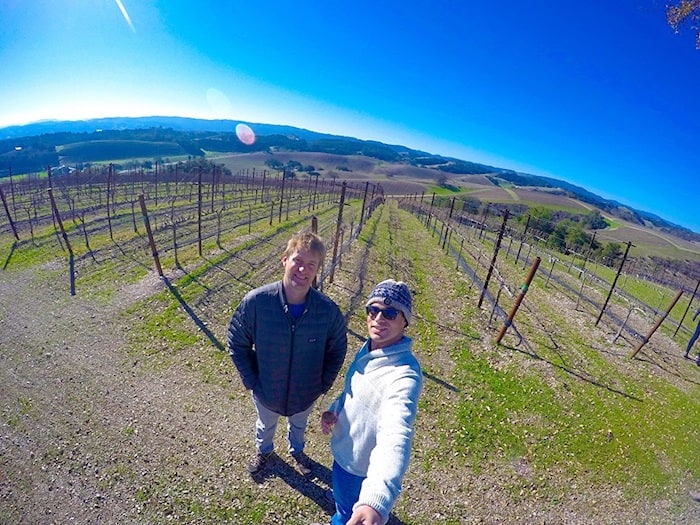
“The goal was to give Treana a more vivid sense of place, and to also let a bit of my personality come through,” says proprietor Austin Hope.
Niner Wine Estates
“Did I catch a Niner in there?” Yes you did. In our quest to discover the best Paso Robles has to offer, we dropped by Niner Wine Estates and met up with Katie Bruce and owner Andy Niner.
Roughly 212 acres are farmed at 3 distinct microclimates by Niner Wine Estates.
Perhaps the most unique from an aesthetic standpoint is Heart Hill Vineyard. Located just behind the tasting room rests 46 acres of vines in Paso Roble’s Willow Creek District. Smack in the center near the top of the hill is – you guessed it – a heart. But the wine being produced here in the winery has both heart, and soul.
Andy and his team are eager to continue extracting young Paso Robles’ secrets. After all, it really is only within the last 10 years that Vintners have fully begun to understand Paso’s potential.
From exploring the unique microclimates and expanding their vine plantings (87 new acres were recently planted), to reusing ONLY collected rainfall to water their vines. To picking their grapes at night, to powering their facility on 100% solar, to experimenting with blending techniques of Italian and Burgundian influence – the quality of the juice and appreciation for the environment shines through.
Niner is perhaps one of the best examples in the world where a true respect for the land leads to the Earth giving up her true heart.
I was perhaps most impressed by 2013 Estate Cabernet, sourced 95% from Bootjack Ranch vineyard and 5% from Heart Hill vineyard. While it’s dubbed a Cabernet, it also has the perfect mixture of 5% Petit Verdot. The resulting flavor profile was astounding to me. Rich red fruit, vanilla and velvety tannins over a perfect balance with a lengthy finish. It earned itself 93 points during the 2016 Ultimate Beverage Challenge.
While the Cabernet Sauvignon is good enough to sustain me on a deserted island for a couple of years, the bar was raised even higher when I had the opportunity to sample their 2012 Reserve Super Paso. A Super Tuscan-inspired blend with a Paso Roblian tilt. Only 12 cases were produced and allotted to their library collection. To me, this wine really showed the depth and range that Niner’s production quality can go. Estate grown 12% Sangiovese was co-fermented with 53% Barbera and 25% Cabernet Franc with smaller concentrations of 5% Merlot and Petit Sirah included as well.
The result is a blueberry, cassis, black cherry pomegranate vanilla cream pie – but without the sweetness. You’re just tasting the essence of Paso Robles fruit, in a perfectly balanced form.
Andy only relatively recently took over ownership from his father, but in a short period of time his ambition has become clearly evident given their dedication to quality, sustainability and vision.
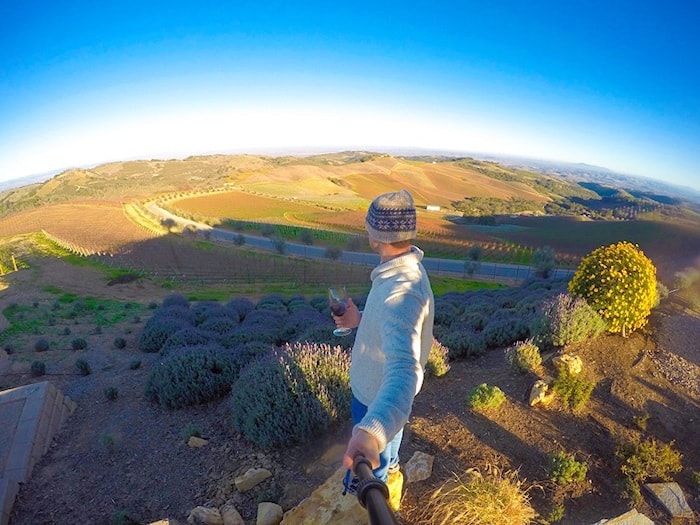
Located within the Adelaida District AVA of Paso Robles, “Daou Mountain,” as brothers Georges and Daniel Daou refer to it – is a benchmark of quality Cabernet Sauvignon in Paso Robles. The Daou Brother’s mentality here is simple – create gorgeous Cabernet and Bordeaux style blends that best express this special Terroir.
It is in large part because of the Daou brothers’ determination and skill that has helped put Paso Robles on the map. It’s now recognized as one of the best regions in the world for Cabernet Sauvignon among industry professionals.
So the wine is great, as you’ll discover, but the view enjoyed whilst sipping on a glass of American-borne, French Oak-aged Bordeaux style red blend is indescribable. Enjoy the beautifully styled tasting room and grab a table for lunch with a 360-degree view.
You can also order glasses at the bar counter and sip outside in any of the lounge chairs overlooking the rolling hillscape.
Where to Stay in Paso Robles
In an effort to save money yet stay at a comfortable hotel, we opted for accommodation at the Spring Hill Suites by Marriott. This relatively new hotel is a 15-minute drive from most wineries in the area.
The hotel has spacious rooms, comfortable beds, free breakfast, free WiFi and affordable rates (around $107/night with the exception of holiday seasons). The design inside is modern with hints of wine country spread about the grounds (look for the vines!).
Sixth Stop: Big Sur
In terms of scenery, there are few places in the world that compare to Big Sur. From the coastline to walking amongst the redwoods, Big Sur is a special place. In my opinion, it’s one of the top 3 stretches of coastline in the world in terms of views.
Big Sur is more than just one location or thing. It’s actually the entire stretch of coastline from Carmel to San Simeon. As you drive up or down the PCH, it’s difficult not to quickly become distracted by the epic bluffs and waves crashing along the rock formations. The roads can be narrow and winding and they literally traverse the cliff faces in the area, so pay attention to what’s in front of you and pull over to the numerous stopping points if you want to look around. Note that many of the scenic stops also have relatively short hiking trails that make for ideal sunrise or sunset treks.
What to do in Big Sur
Eat at Nepenthe Restaurant
Prior to planning my Pacific Coast Highway trip, and even during our visit, Nepenthe kept coming up. Even when we were in San Diego. So what’s all the buzz about? The food ain’t bad, but the view is what makes this place so special. Zagat puts it into perspective nicely:
For “a true Big Sur experience”, this “iconic” stop (since 1949) is the place to “sit on the back deck and hang with a mixture of locals and tourists” while taking in the “stunning” Pacific view; though the midpriced American eats are merely “average”, that’s “irrelevant” given the “spectacularly scenic” locale.
Stop by Pfeiffer Beach and/or Pfeiffer Big Sur State Park
For a walk amongst the redwoods and a chance to see the area’s wildlife, visit Pfeiffer Big Sur State Park. Look down on the Big Sur River Gorge and consider camping in the area.
Pfeiffer beach is accessible off of a somewhat hidden road tucked away on Highway 1. It’s perhaps the best known beach in the area, although the coastline offers plenty of similar views. Note that it’s best to go early in the morning, as the parking lot can fill up rather quickly and they’ll close it down. Also note that there have been wild fires in the area during some dry months, and now we’re hearing that excessive rains have caused landslides, resulting in closing Highway 1 in some areas as well as other nearby roads. Be sure to check the conditions of the area before committing to any serious excursions.
Visit McWay Falls
Parking is available on both Highway 1 and within Julia Pfeiffer Burns State Park (for $10). There’s a coastal trail that leads to falls after a short walk. This is an easy walk, mostly flat. Once you get to the falls, stop for pictures, enjoy the sunset and be sure to keep an eye out over the water for signs of whale breaches.
Big Sur Driving Tip: While the sunset along the coast here is one of the most special in the world, it’s no secret. Traffic can come to a standstill for upwards of 2 hours around the sunset hours, so keep this in mind and expect to deal with traffic if you’re looking for a viewpoint along the PCH.
Seventh Stop: Carmel
This small coastal town is often referred to as a storybook village. From elaborate bluff paths, scuba diving, surfing to fine art galleries, Carmel quite literally has something for everyone, and that’s why it’s worth stopping here.
Carmel has almost TOO many things to do. This upscale town offers fine dining, premium shopping and a fantastic assortment of nightlife and drinking experiences.
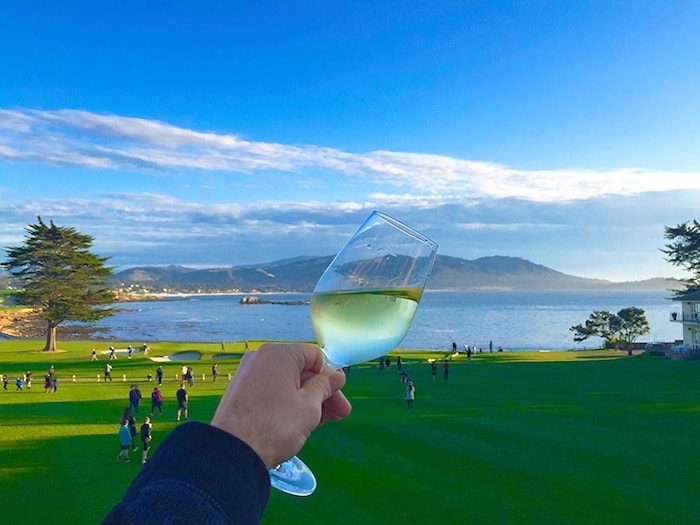
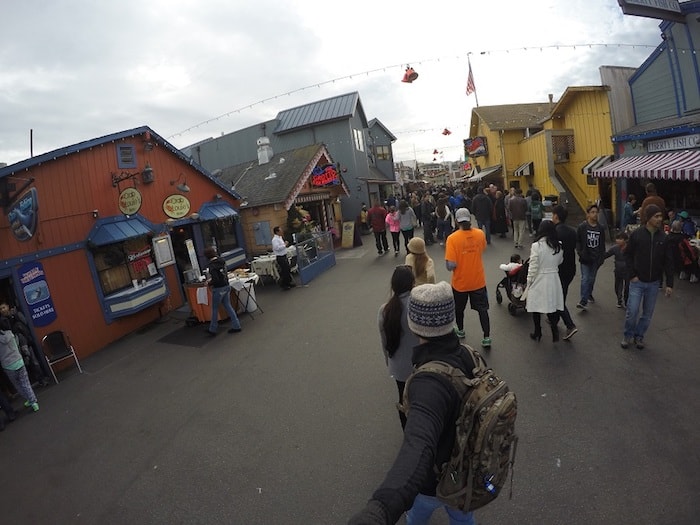
Eighth Stop: Pebble Beach & Monterey
As you leave Carmel — regardless of whether or not you’re a golf enthusiast — it’s worth stopping at Pebble Beach for a drink and an opportunity to take in the sights.
Pebble Beach is more than just a golf course, this luxury resort community is actually home to 4 courses. In addition, there’s a sprawling 17 mile stretch of road that takes you through a scenic neighborhood. But it goes beyond just the views and the golf, you can go kayaking, horseback riding and hiking in the area. Be sure to look at the Pebble Beach website to plan out what interests you most. You can also take a look at our Monterey County Itinerary.
We stopped in the area for about 3 hours and did the scenic drive, staying until sunset to have a drink overlooking the water and links course. After sunset, we pushed on to our hotel in Monterey.
What to do in Monterey
Monterey stood out to me on this trip. Perhaps because I was born and raised near the water, but there was a nautical and rustic feel to this place that made Monterey feel like it could be a second home. If you’re into wildlife, especially as it relates to the sea — you’ll enjoy the Monterey Peninsula.
Visit Fisherman’s Wharf
Not unlike the Wharf’s found in Santa Barbara and San Francisco, Fisherman’s Wharf on Monterey Bay plays host to a variety of seafood restaurants featuring fresh local seafood ranging from clams to crabs to tuna. This is a great place to walk around, enjoy a beer and perhaps an oyster shooter dockside. It’s for the most part the heart of the town.
Visit the Monterey Bay Aquarium
One of the best aquariums found on the West Coast, the Monterey Bay Aquarium hosts animals ranging from sea otters to sharks. This non-profit aquarium’s primary focus is research and education, focusing on the health of California’s oceans. A fair portion of animals found inside can also be found just outside in the bay. Take a virtual tour here.
Go Whale Watching
Something I had never done before was whale watching. I figured Monterey Bay was as good as any when I heard that humpback and gray whales could be found here. We went on a tour with Monterey Bay Whale Watch for 3 hours, and what we saw blew us away.
According to Greg McCormick, our incredibly knowledgable resident naturalist and tour guide with Monterey Bay Whale Watch, seeing gray whales within the harbor itself is incredibly rare. In fact, in all his years of conducting these tours, he had never seen them in the harbor before — until we hopped on the boat.
As a sea lion sat on a buoy soaking up the mid-morning sun, all of a sudden a pair of two grey whales breached slightly just to our port side. As the day went on, we saw large groups of sea lions, various species of dolphin and eventually 3 humpback whales. On our way back in, we saw a boat tagging great white sharks.
All in all, if you enjoy the sea, don’t get seasick and are looking for a unique activity, whaling watching with Monterey Bay Whale Watch is about as good as it gets.
Ninth Stop: San Francisco
Firstly, on your way up to San Francisco, consider stopping at Big Basin Redwoods State Park. This park will take you inland a bit, away from the Pacific Coast Highway. However, it’s worth it if you want to go on a few beautiful hikes and get to see both the Father and Mother of the Forest – two incredibly large and ancient redwood trees in the area.
After Big Basin, it’s off to San Francisco. When visiting such a large city, it’s difficult to narrow down exactly what to do. Given the limited time we had, we picked a few iconic landmarks and neighborhoods to explore. We chose to stay at The Palace Hotel in the financial district, an exclusive Starwood property in a convenient location.
After checking in, we went to visit the Haight District. This hippy-esque scene is popular amongst both stoners and foodies. It’s also the former home to the Grateful Dead. Be sure to check out the Amoeba record store and then continue on into Golden Gate Park.
Later, head over to Golden Gate Bridge and stop at one of the viewpoints for a picture. Just note that if you leave the city and then enter again you’ll need to pay a $7.50 toll.
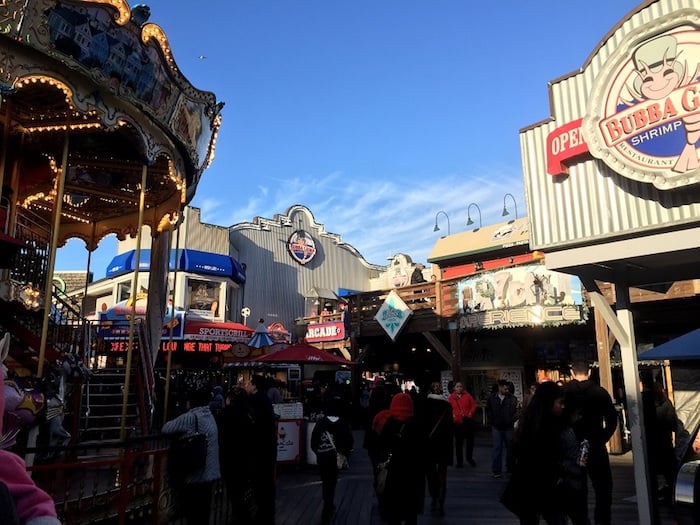
Visit San Francisco’s Fisherman’s Wharf
In terms of iconic locations, San Fran’s Fisherman’s Wharf is on par with both Alcatraz and The Golden Gate Bridge. The Wharf is vast, consisting of dozens of different piers, with the majority of attention being paid to Pier 39. Restaurants abound, an aquarium (though Monterey’s is better), bars, food stands, live music in the street and even live painting is all happening.
This hopping area of town is well worth a visit for at least half a day to enjoy the sights, sounds, food and culture of the area. See what’s happening this month on San Francisco’s Fisherman’s Wharf.
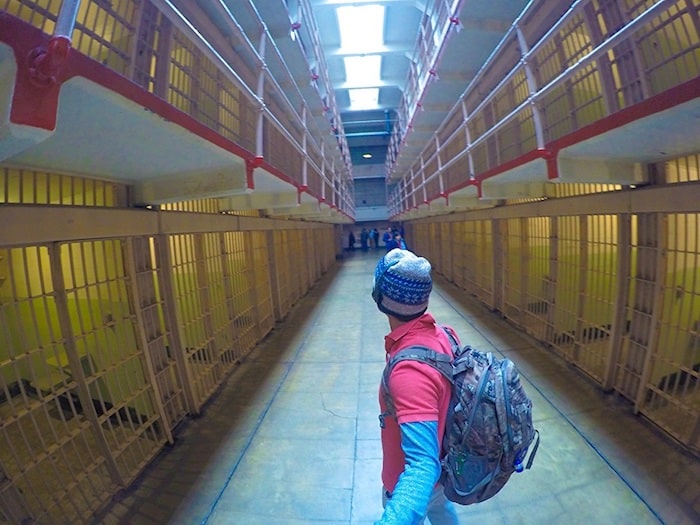
Tour Alcatraz Prison
If you’re in San Francisco for a couple days, I highly recommend embarking on the Alcatraz Prison Tour. Yes, it’s a bit touristy. But this is still an iconic prison to visit, and the rangers who conduct pop-up discussions along with the audio tour itself are all fantastic. I was in awe listening to both the true stories and myths. The tales and truths of escape, murder and life in the prison were fascinating. Pick up tickets here with Alcatraz Cruises – which includes both a ferry ride over and tours on the island itself – for around $35.
If more time is still available to you, consider any of these other must-visit locations during your visit to San Francisco:
- Fort Mason Center
- Marin Headlands
- Crissy Field
- Presidio
- Fort Point
- Muir Woods National Monument
- Sweeney and Milagra Ridges and Mori Point
- Fort Funston
- San Francisco National Maritime Historic Park
Day Trip Suggestion: Napa Valley
Napa Valley has become a prominent name discussed around the world for the quality of wine in this region. These days, it tends to carry a little bit higher of a price tag when compared to some of its neighboring California wine regions. That said, it’s still worth a stop if you’re looking to make a day trip outside of San Francisco. Currently, Napa Valley is home to over 400 wineries and is visited by more than 5 million people each year. It’s a massive enterprise, and money transferred to the region from tourists exceeds over 1 billion annually.
